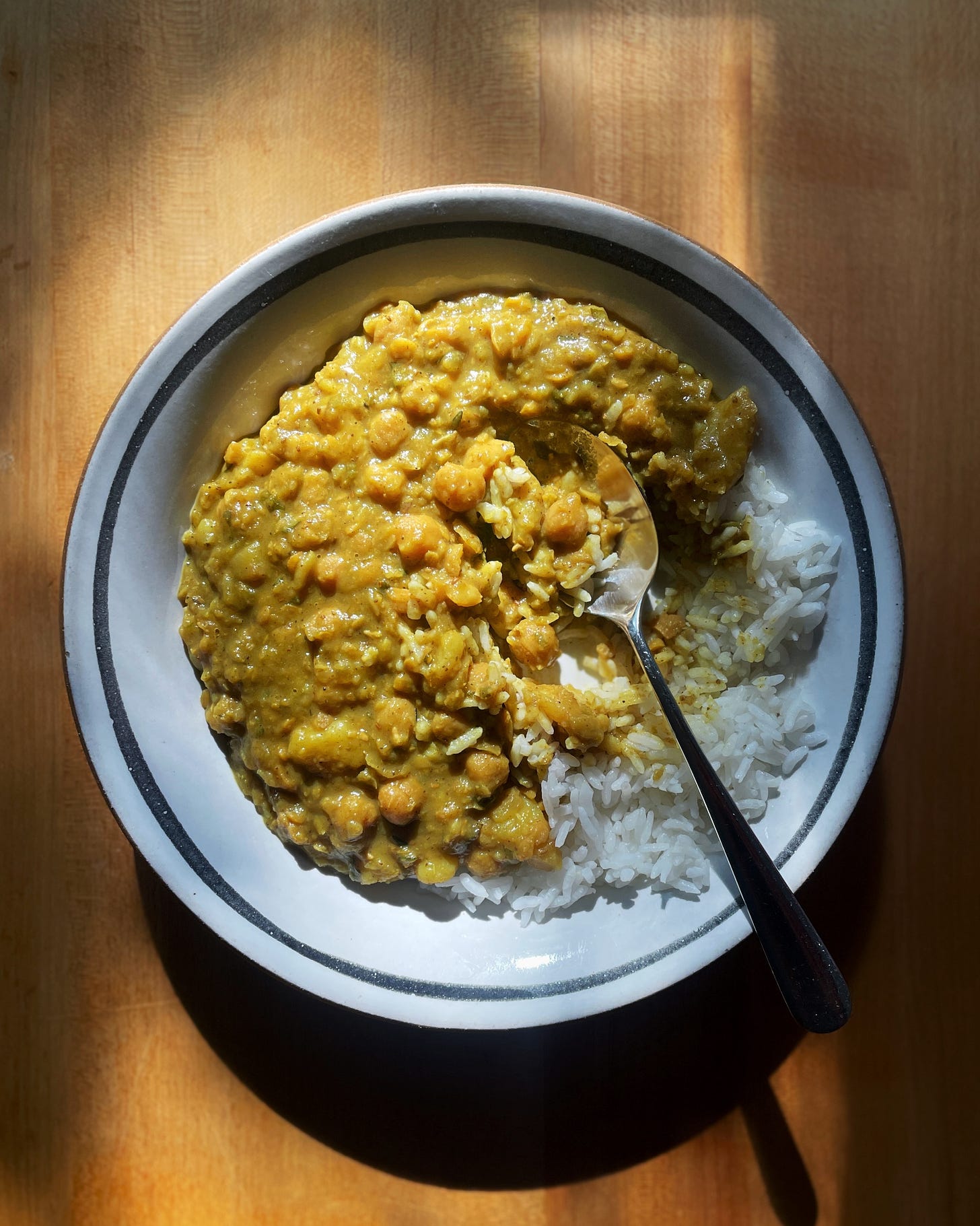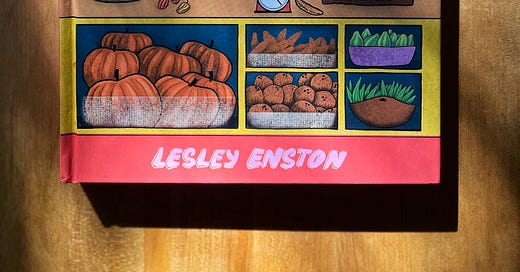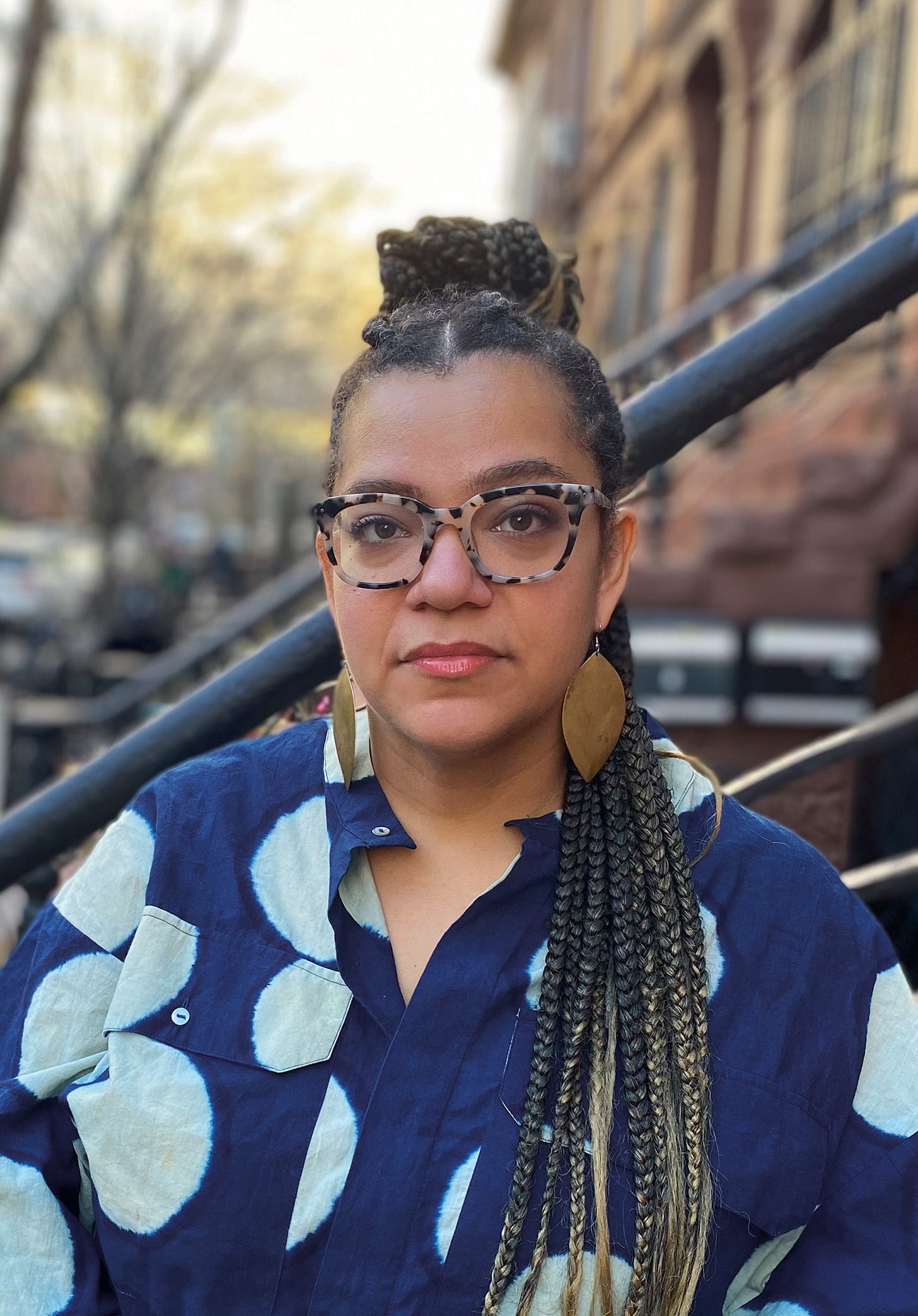Key Caribbean Ingredients and Rich, Complex Cuisines
A Q&A with author Lesley Enston, plus the chance to win a copy of her new cookbook Belly Full
Happy Friday! Just a quick reminder that you can now find all the recipes I’ve published in this newsletter in my recipe index.
From time to time I enjoy highlighting new cookbooks and authors, which is what we’re doing today. Scroll down for my Q&A with Lesley Enston, as well a chance to win a free copy of her excellent cookbook.
More Author Q&As | Protein-focused recipes | Vegan Recipes
I’m excited to feature a very special cookbook today, which happens to be written by an old friend of mine, Lesley Enston. It’s called Belly Full: Exploring Caribbean Cuisine through 11 Fundamental Ingredients and Over 100 Recipes, and it was published just this week. (You can even win a copy! Find details below.)
Lesley and I met when we were both working as writing tutors at Hunter College here in New York, twenty-ish years ago. In the time since then we’ve shared many, many meals, and I’ve always known her to be an incredible cook. In the past few years, it’s been thrilling to watch her turn her focus to recipe development, becoming an authority on Caribbean cuisine and writing for Bon Appetit, The New York Times, and other publications.
I’ve always loved the bold flavors and complex spicing in Lesley’s cooking and she has absolutely broadened my palate, introducing me to things like scotch bonnet peppers, sour oranges, calabaza squash, and many others. And miraculously, I — a very banana- and coconut-averse person — have even come to enjoy plantains and coconut. In certain instances.
But despite being a frequent guest at Lesley’s table and having eaten so much of her delicious cooking, I’m embarrassed to admit that prior to reading her book, I knew very little about Caribbean cuisine and the history that shaped it into being. So on top of its excellent recipes, Belly Full has been an incredible resource, full of history and context for the recipes it features.
It’s cleverly organized by 11 of the region’s key ingredients, which are connectors for the countries’ unique cuisines. These ingredients are:
Beans (yay!)
Calabaza squash
Cassava
Chayote
Coconut
Cornmeal
Okra
Plantains
Rice
Salted Cod
Scotch Bonnet Peppers
Nutritious and incredibly whole-foods oriented, many of the recipes she shares in Belly Full are plant-based, too — because, she writes, throughout the Caribbean, “land is at a premium and animals take up a lot of space.”
If you’re unfamiliar with the cuisine and/or any of these ingredients, Belly Full is going to be a delicious entry point. Below, Lesley has answered a few questions about her book, and she’s also let me share her easy, excellent recipe for Curried Chana & Aloo, a comforting and incredibly flavorful curry of chickpeas and potato that I’ve been enjoying all week long. The recipe will be up for anyone to access for a week, and after that it will only be available to paid subscribers.

Win a Copy of Belly Full
I have two extra copies of Belly Full and would like to give them away. To enter, just leave a comment below, sharing which of Lesley’s 11 ingredients featured in her book (Beans, Calabaza squash, Cassava, Chayote, Coconut, Cornmeal, Okra, Plantains, Rice, Salted Cod, or Scotch Bonnet Peppers) is your favorite.
Update: Giveaway closed
This giveaway will end on Monday, September 16th at 11:59pm EST. I’ll select winners at random and message them directly for their mailing addresses. I’ll only be able to send to US addresses.
Q&A with Lesley Enston
How do you find Caribbean food to be represented outside of the Caribbean? Are there any major misconceptions?
Often I think Caribbean cuisine is thought of as “simple” or “peasant” food which is somehow not as valid or important as so-called “fine dining” or “elevated cuisine.” Simultaneously I think people can be intimidated by all the ingredients, and think that makes it too difficult to make. In my view, neither of these things are true. Caribbean food is layered and complex, with such a rich history. The ingredient lists can be long, and some dishes in particular do take a level of expertise, in part due to coming from so many different cultures, but there’s a flexibility and ease that’s really inviting to anyone. So much of it was born from displaced and enslaved Africans who had to recreate their food in this new place with limited means.
Is there anything you were surprised to learn when working on Belly Full?
As someone who has lived all their life in different Caribbean Diasporas I think I was just surprised at how much I didn’t know! There are so many riffs on dishes, or completely unique ones, that I had never tried or heard of until working on this book. I also learned things I never realized about where some of our fundamental ingredients come from, such as plantains, which are so inherently Caribbean. I thought they came there via Africa, but they are, in fact, originally from Southeast Asia.
What are some of the defining bean preparations in the islands? In your bean chapter, you also write about how beans may have been a site of connection between the islands' Indigenous peoples and enslaved Africans... I'd love it if you could share more about this detail.
All the Caribbean nations have a version of stewed beans, perhaps the simplest way you can prepare them. Beans cooked low and slow, with the seasonings and spices specific to that nation. You could probably blindfold someone from the Caribbean and they could identify approximately where that stew bean came from, whether they used cloves, or thyme, or all spice.
And yes, from what historians can tell there was a fair amount of interaction between the Indigenous peoples of the islands and the enslaved Africans, brought there to replace indigenous labor. I would love to know how they communicated! They often lived side by side, and surely shared both an urge to live as well as they could given the circumstances, and a hatred of the colonists. Both groups had been respectively cultivating beans for thousands of years, and so when they met it’s not surprising that they saw this commonality. It’s possible that the enslaved, who weren’t necessarily able to bring any of their own foods with them, saw the Indigenous people growing and eating beans and first made the connection. I think it’s also likely that both groups cooked them similarly, over a fire with water and the seasonings around them.
If you had to choose just one, which of your fundamental 11 ingredients would be your desert island pick?
That’s hard! It might be rice, because I do eat some form of it most days of the week, but it also could be plantains because I just love them, and their versatility, so. Fried plantains are one of my absolute favorite things in the world and I think it’s possible I could eat them every day if I had an excuse.
What's your weekday go-to in Belly Full? And which recipe would you recommend that readers start with?
I have multiple jobs and a small child, so I definitely have a handful of recipes in my “I just don’t have time” repertoire that I can make with my eyes closed. Two recipes on regular repeat in my house are the Buljol, which is stewed salted cod, and the Diri ak Pwa, or Haitian rice and beans. The former was what my mother always made when she was similarly short on time or capacity, and to make it evokes her in the kitchen. It’s also very forgiving and quick to come together.
The rice and beans have become a staple in our house, and the Haitian preparation is my favorite. While this is usually a side dish in most Caribbean households, we will often eat that as a main with some veggies on the side, as I grew up eating some form of “peas and rice” as they say in Trinidad as dinner. Both recipes are very accessible, have easy to find ingredients, and are extremely Caribbean dishes that are classics (in some variation) on tables throughout the islands. I think those are two great ones to start with!
For friends in New York, Lesley will be having a book launch event on Saturday, September 21th, with BEM at the Museum of Food and Drink. And for more information, follow Lesley on Instagram.






I love me a good cornmeal recipe!
My favorite of Lesley's key ingredient is the coconut. It shows up in so many of my favorite dishes. For example, I often use coconut milk to cook porridge or add grated coconut to the porridge itself. Everyone loves coconut-based baked goods including coconut rock cake, coconut pies, coconut ice cream, and coconut rolls. It's not rice and beans unless it's cooked in coconut milk. You can't have ducana without the coconut. Then, we have our refreshing beverages including pure coconut water pina coladas, and coconut crushes. Then we have our oil down - I have a delicious vegetarian version which is easy to prepare. Coconut oil is great for frying or for drizzling on toast or hot bread with honey. Yummm!!! Okay, I could go on...